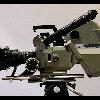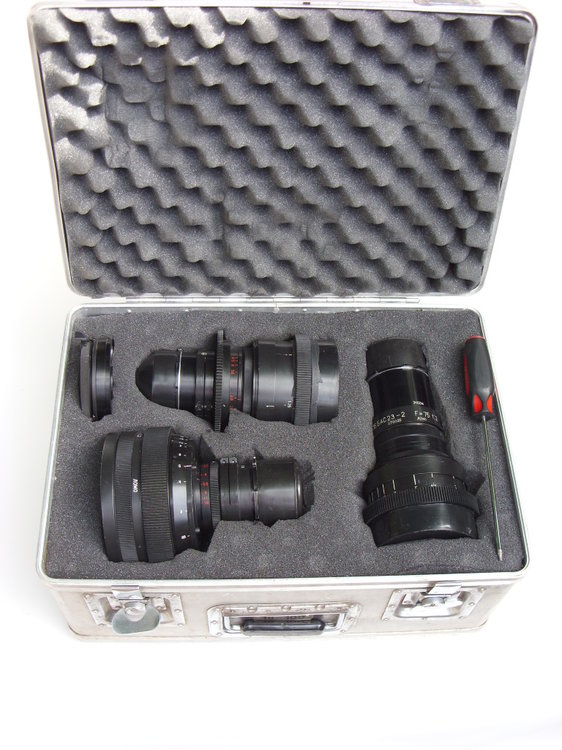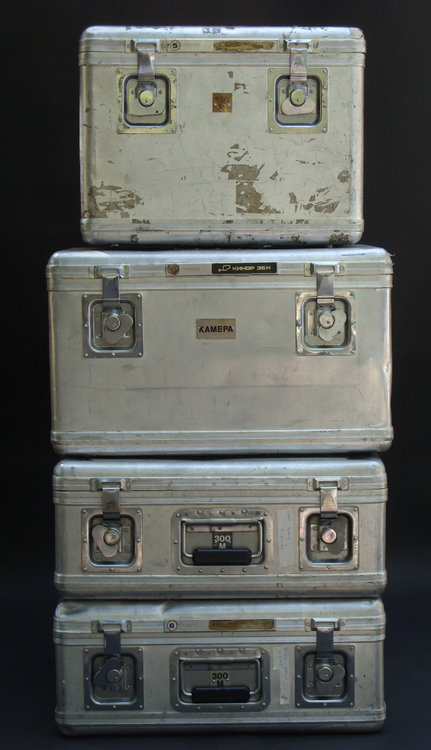-
Posts
502 -
Joined
-
Last visited
Everything posted by Bruce Taylor
-
Huh, I wonder if they still sell them at the auto parts store? A drip pan is a large (about 3x4') shallow pan that was used to keep the drips of oil dropping from your car's engine from fouling your driveway or garage floor. In the olden days they even had them under new cars at the dealership! These days a drop of oil on the ground means a trip to the mechanic to find out what the problem is. Adrian's solution sounds good if a "drip pan" is a thing of the past.
-
10:1 shooting ratio, 2000' rawstock, $1300. Processing, $200, telecine $1000, camera rental- one or two days, sync or MOS?, $1000 to $4000. Insurance? Sound?Crew? Sets? Permits? Crane/dolly? G&E package/truck? Editor/Post production? $7510 sounds like a bargain, even if everyone works for free (and you still have to feed 'em). I just finished shooting a 2 min 35mm commercial, 10:1 ratio. I own the cameras, dolly, jib, G&E, locations, etc. No paid production crew, my son and I did it ourselves. Rawstock was left over from another project, so no cost there. I expect to spend about $3000 to get it finished. It might be helpful to do some budgeting on your real costs before embarking on this project.
-
I got one of the Cine City matte boxes, 2 stage, rotating, mounts on 60mm or 100mm rods, eyebrow + side skirts. Would probably work nicely with an HDSLR with a 60mm rod set up.
-

Foam for your cases
Bruce Taylor replied to Davon Slininger's topic in Camera Assistant / DIT & Gear
Finally dug up a pic! The case is a repurposed Kinor 35H aluminum unit modified for Lomo anamorphic primes and a RED OCT19 adapter. -
Matthews makes one, the "round-d-round" doorway dolly. Pretty slick: dolly
-
Excellent point, Olex. I have repurposed a number of Kinor 35H aluminum cases. They are very strong and durable, and are much lighter than a Pelican or similar case. They are sometimes sold on ebay, but shipping out of Russia to the west can exceed the value of the case, unfortunately. Thank you for the clarification on the battery storage. The use I was speaking of was only for a few hours during a shooting day, it was in one of the exterior pockets of the bag. A stack of Kinor 35H cases:
-
Pelican cases seem to be the way to go these days. Durable, cheap and relatively light weight. I still use the original Russian case for mine. While durable, it is heavy and not ergonomic to use (surprise!). I have also collected a bunch of old Zero Halliburton aluminum cases from ebay over the years. They can be had for very reasonable prices, but they all need to be refoamed. I also saw a clever arrangement that a Kinor 35 owner had put together. To minimize disassembly when moving the camera relatively short distances, he made a case out of a smaller nylon duffel bag, thin pressboard and a couple of densities of foam. The pressboard added rigidity, then he built the foam to accommodate the camera, mattebox/ff, one prime lens and a 500ft mag and a battery. He could then safely move the assembled camera without tearing it down.
-

LOMO Anamorphic test
Bruce Taylor replied to Kristian Schumacher's topic in Lenses & Lens Accessories
Right, the lenses are not flat field. The easiest way to determine focus plane is to create an arc from edge to edge from the film plane with your tape measure. I am not surprised you don't see an improvement, the example photos you had show a brick wall from a considerable distance, the DOF should easily have made up for any small distance differential. That's why I suspected adjustments were needed. -

LOMO Anamorphic test
Bruce Taylor replied to Kristian Schumacher's topic in Lenses & Lens Accessories
Have the lenses been gone through by a lens tech that knows how to set up anamorphic lenses yet? Issues I see regularly are Lomo anammorphics that have not been evaluated and set up by a qualified lens technician, and then judgements are made about the quality of the lenses. The Lomo mechanicals are not the best, but the optics can be quite good. I have to have my 35mm in for adjustments quite regularly, probably because it is so heavy that it goes out of whack. It is a complex lens that needs frequent attention. -
I think we accept the current visual style we have applied to other time periods without a problem. And thinking of film, '50's 35mm might have more grain than 2010's S16.
-

Micro-Budget still using film: Brutal Ratios
Bruce Taylor replied to Alain Lumina's topic in General Discussion
While I very well understand your desire to shoot on film, your plan strikes me like a lot of additional complexity for a no-budget production. I say this with great respect for no-budget, some of the films that have most affected my life were made with artistry but no money. Since you seem like the main creator behind this work you're going to have a lot to deal with during production without the additional challenge of filming in multiple formats and camera systems. Which brings me to this: if it is essential to the visual look you require to shoot on both formats, then go ahead. That's what you need to do, so do it. However, if whatever you are trying to achieve can be brought in (perhaps not ideally) digitally, perhaps you can spend more effort telling a great visual story if you're not distracted with the two format scenario. Best of luck on your project. -
Nope, the frame rate was 2 fps, though I can't figure out how he was running the video exactly, interlaced 1080 at 2 fps? He came up with a motor to run the Arri at that speed. I was going through old emails, and between the fact that he is a Belgian living and working in Ecuador his English is a little difficult to understand especially with technical terms. If you all are seriously interested in his set-up, I can contact him and see if he would like to share detailed explanations of his film-out rig.
-
As I recall, he is using a large HD flat screen monitor and films it with an Arri IIC running at about 2fps. He has carefully calibrated the color and exposure and is getting good, predictable results. His last feature was to be filmed in 2 perf 35mm, but the results from his 7D filmout were so good the producers opted for 7D acquisition :( . He uses this technique to produce a negative to strike a limited number of prints for the cinemas, all of which run 35mm projection.
-
Yipes! You guys are harsh. I think Sterling and Timmy the RED camera owner/operator need to get together for more ninja fun.
-
"what exactly does saturated colors mean?" The opposite of saturated color is de-saturated color, which is grey scale. Color saturation is a reference to color intensity. That is not difficult to see. "Soft colors"-- I don't know what that means-- do you mean contrast between colors? In the second photo the colors are all similar, so there is little contrast between the colors. It is also a low contrast picture which gives it a "soft" look. You should be able to find good definitions in books or other publications devoted to photography. I have always found old Kodak publications for amateur photographers a great place to find simple concise definitions of ideas like this.
-

coverting list: meters to seconds/ minutes in 3 perf, 35mm at 25fps:
Bruce Taylor replied to Niclas Tornblom's topic in 35mm
That would be 5 min 41 sec of run time. You can find what you need here: http://motion.kodak.com/motion/uploadedfiles/US_plugins_flash_en_motion_filmCalculator.swf -

Kinor 35H viewfinder extension question
Bruce Taylor replied to Steve Zimmerman's topic in Russian Gear
That's it! You pull off the viewfinder prism that contains the eyepiece, turn the receiver with the red dot 180 degrees and reinstall the prism, install the extension viewfinder in place of the short eyepiece. BTW, I have been advised not to engage the contrast viewing filters installed in the extension finder as they may not return to their normal position. -

2 Perf downsides?
Bruce Taylor replied to Nick Centera's topic in Students, New Filmmakers, Film Schools and Programs
Hmm, I wonder what "old beaters" Mitch is referring to? I hope not my equipment! Both the Aaton Penelope and Panavision have 2 perf capabilities these days, but availability has been outstriped by demand much of the time from what I have read. Mitch has it right though, don't use a worn out "beater." I guess that would apply to any format though. There is little margin for error at the top and bottom of the gate; so hair, dirt are potentially more of an issue, though I haven't had anyone say they were having a problem with it. That's about it. In terms of labs, film processing is the same no matter how many perfs, so any cine lab can process. In terms of telecine, as Mitch says, any Spirit is capable. Paul Korver at Cinelicious.tv has his Rank set up with a 2 perf head, he can provide low cost TK with it. Deluxe made quite a point at the 2 perf symposium at Cinegear a couple of years ago that 2 perf was no different than 4 perf or 3 perf to them. I think all of my 2 perf rental clients so far have used 2 perf as an aquisition format for an HD or SD finish and have not done DIs. Bruce Taylor ww.indi35.com -
Dom, I think this would apply to most anamorphic lenses. Anamorphics are obviously more complex than spherical lenses, and are more prone to alignment issues. I think it goes without saying that Lomos aren't built to the same standards as Panavision, but they do produce outstanding images when set up correctly. Miguel, Spherical Lomos are also excellent optically when set up properly, and are an approximate equal, optically, to other cinema lenses produced at about the same time period. The lenses with the Kinor 2 perf package were produced in the late 1980's, so look for an optical quality of that period of Zeiss optics, but warmer. You can order the 2 perf feature "Frostbitten" DVD here from Amazon for $5 including shipping! It is Anders Banke's first feature, shot with his own 2 perf Kinor 35H cameras and Lomo lenses. This is identical to the Indi35 equipment, in fact, Anders did the 2 perf and electronics modifications. It will give you an idea of what you can expect. I think if you do some searches on this forum you'll find some info on Lomo sphericals, also be sure to check out www.konvas.org, which is dedicated to Russian post-war cinema cameras and optics, you'll find lots of information there. If you're thinking about renting my gear please feel welcome to come by and shoot some test footage. The best way to decide if it will work for you is to test the whole production and post production path. Shoot test footage, process it and send it all the way though your post-production workflow and see if you get the results you want in the end. Good luck and let me know if I can help in any way. -Bruce
-
Love the new site! Hunter, you caught the cinelicious vibe. Well done.
-
Here is a summary from the national BBB website of this company, also known as "Career Connection:" http://www.la.bbb.org/Business-Report/Career-Connection-13134620 "Complaints allege failure to provide services as represented and not contacting clients to provide assistance. Clients complain that the company fails to issue certificates, provide job placement assistance, or final grades. They also complain that calls are not returned, and unexplained delays occur in starting the mentoring services. The company responds to complaints by agreeing to place client in recording studios, offering to provide job placement assistance, and sending out certificates. In some cases, the company fails to provide explanations as to why services were not originally provided."
-
Don't know if this will help, but Filmtools had a demo of a car mount system for DSLRs at Cinegear this year. It looked very versatile and inexpensive. Perhaps they could steer you toward a rental facility if purchase is not possible.
-
The photo is not terribly clear, but it certainly appears to be a rear mounted anamorph element, which is usually set up for a 2x squeeze on a 4 perf frame. It looks just about identical to the rear anamorphic attachment I have for my Lomo zooms.
-
Exactly. Techniscope camera footage has to go through an optical printing or DI process to create a correctly formatted 4 perf anamorphic projection print. I think that's where the confusion is: techniscope is a flat acquisition format, but an anamorphic projection format.






